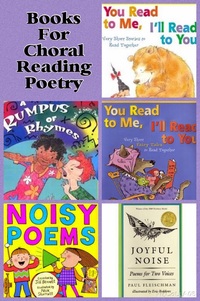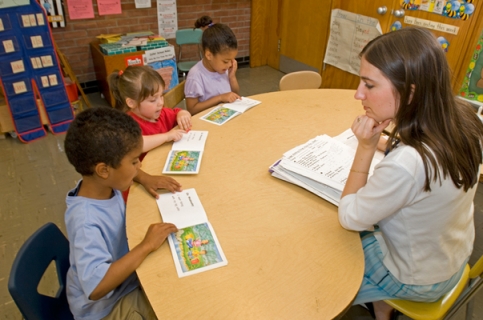What is Choral Reading?
Choral reading is a literacy technique that helps students build their fluency, self-confidence, and motivation in reading. During choral reading a student, or a group of students reads a passage together, with or without a teacher. Choral reading can be done individually, in small groups, or as a whole class. According to Reading Rockets (n.d.), there are three main reasons why choral reading is beneficial, and they include:
Choral reading is a literacy technique that helps students build their fluency, self-confidence, and motivation in reading. During choral reading a student, or a group of students reads a passage together, with or without a teacher. Choral reading can be done individually, in small groups, or as a whole class. According to Reading Rockets (n.d.), there are three main reasons why choral reading is beneficial, and they include:
- It provides a model of fluency
- It improves sight word recognition
- It allows practice and support
- Groups of students take turns reading different pages
- Everyone in the class reads the whole passage together
- Boys read lines 1-3, and girls read lines 4-6
- Teacher models how to read a sentence, then the students read that sentence together
Visual Representations
Content Area Examples
Social Studies- To use coral reading in a social studies classroom, the content of the passage students are reading could be something that was written many years ago, for example. Students would chorally read similar to what they would do for a fictional text, but it would give the read more meaning because it could be about something that really happened.
Science- One possible way to do choral reading in a science class is for students to be divided up into groups of 3 or 4. Each group is given a different poem about birds and then they need to choral read that poem together.
The group or partners need to then research about the bird poem they received. Students could then chorally read their poem once again to the class and share the research that they found.
Language Arts- As mentioned before, for a language arts classroom, students read a passage or a poem together, or chorally. Students can read the entire passage together, or in parts. For younger elementary students the teacher could use the example of The Itsy Bitsy Spider, and students could switch off ever other line. Since most students are familiar with this rhyme and song, it will help students become even more fluent.
Want to learn more about how you can incorporate choral reading into different content areas?
Click on the links below to find out.
Social Studies- To use coral reading in a social studies classroom, the content of the passage students are reading could be something that was written many years ago, for example. Students would chorally read similar to what they would do for a fictional text, but it would give the read more meaning because it could be about something that really happened.
Science- One possible way to do choral reading in a science class is for students to be divided up into groups of 3 or 4. Each group is given a different poem about birds and then they need to choral read that poem together.
The group or partners need to then research about the bird poem they received. Students could then chorally read their poem once again to the class and share the research that they found.
Language Arts- As mentioned before, for a language arts classroom, students read a passage or a poem together, or chorally. Students can read the entire passage together, or in parts. For younger elementary students the teacher could use the example of The Itsy Bitsy Spider, and students could switch off ever other line. Since most students are familiar with this rhyme and song, it will help students become even more fluent.
Want to learn more about how you can incorporate choral reading into different content areas?
Click on the links below to find out.


